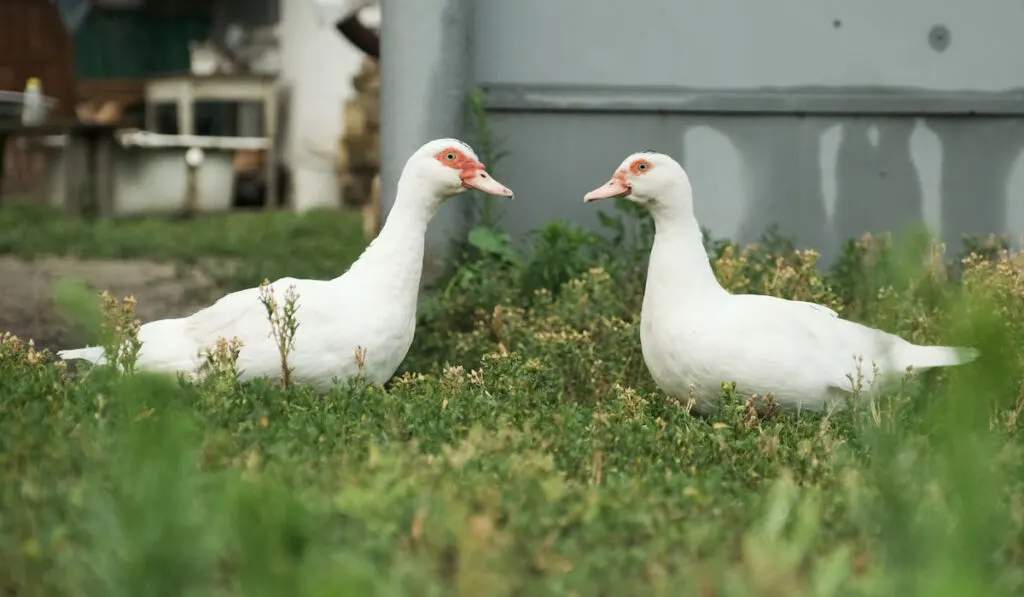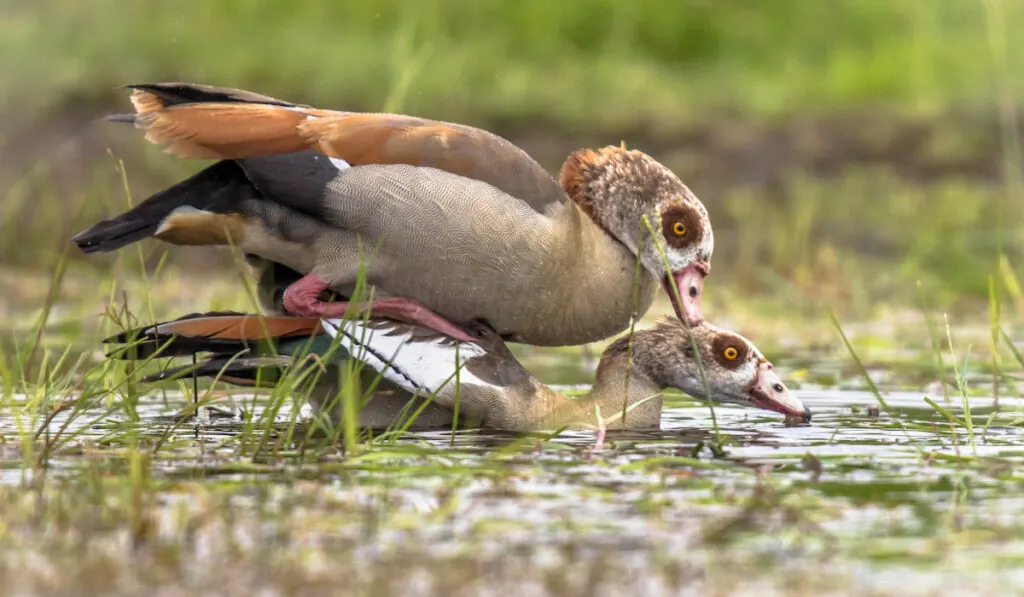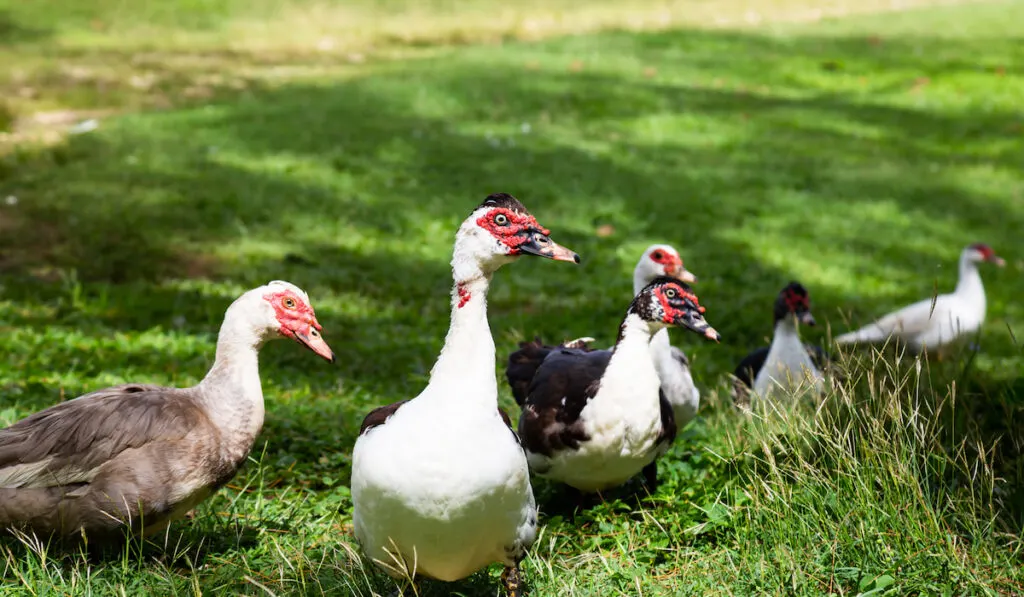If you are a proud duck owner, then by now you have witnessed your duck siblings mating. While most homesteaders leave their ducks to mate whenever and whoever they want, some people are very careful when it comes to their ducks mating. But are these behaviors safe to allow between your animals?
Can duck siblings mate?
Mating between duck siblings (or incest) is completely safe in ducks so long as it does not repeat over many generations. While the act is safe and will produce fertile offspring just as when unrelated ducks mate, mating between siblings can reduce the genetic diversity in future generations.

If you maintain the same family of ducks and opportunities for mating are not diverse, you should consider how this can affect your animals.
How many generations is it safe for duck siblings to mate? What is the difference between inbreeding and linebreeding? Can ducks produce sterile offspring?
We’ll explore the effects that duck sibling mating can have and what you might need to watch for.
Table of Contents
Effects of Ducks Sibling Mating
Inbreeding is defined as the breeding of individual organisms that are closely related. Examples of closely related individuals are:
- Mother and son
- Brother and sister
- Father and daughter
In ducks, inbreeding for a few generations is harmless. Some commercial breeders sometimes breed closely related ducks to promote a specific feature (this is known as linebreeding).
The offspring produced by siblings are also typically fertile.
Inbreeding and Genetics
You should be careful when mating siblings. If siblings continue to mate for more than 3-5 generations, deformities can become prevalent and there can be growth slowness in offspring.
All organisms carry some deformities in their genes. Members of families or closely related animals are more likely to carry a very similar genetic makeup.
Even healthy organisms that appear free from deformities can carry genes that have not expressed themselves (i.e. recessive genes) because of the dominance of a healthy gene.
If sibling (or closely related) ducks continue to mate, these unexpressed genes will continue to grow until they are (or their population is) large enough to be expressed.

To be safe, sibling ducks should not continue to mate after 3-5 generations. If you are intentionally inbreeding to promote a desired trait, you can continue the trait by mating an individual duck with a less related individual such as a cousin.
You can also find ducks with the same trait from other breeders and mate them with yours.
Inbreeding, Crossbreeding, and Linebreeding
Inbreeding is the mating of closely related ducks. In contrast, crossbreeding is the mating of ducks that are completely unrelated and often belong to different breeds.
Linebreeding is the mating of ducks for the purpose of producing a new or maintaining an existing desired feature. Linebreeding is the line between inbreeding and crossbreeding and is self-defined by commercial breeders.
Two ducks that were initially bred to produce a new feature may have been unrelated to one another. However, a commercial breeder can breed their offspring to maintain the new and desirable trait.
For example, ducks that are able to grow quickly and lay a large number of eggs can be desirable for breeders and farmers. Continuing to mate similar ducks together will carry on this trait to produce more ducks with these attributes.
While inbreeding is not sustainable and should not continue beyond 3-5 generations, linebreeding is very sustainable because it is carefully calculated by the commercial breeder and the genes of unrelated ducks sometimes influence the genes of the offspring.
Effects of Crossbreeding on Ducks
Do drakes, or male ducks, willingly mate with female ducks of other breeds? Yes, a male duck will breed with any and every female duck available to him.
Is it advisable to crossbreed ducks or allow your duck breeds to mix naturally? Crossbreeding is not only fully safe, but it is also fun, educational, and economical.
When you crossbreed ducks, you can produce offspring with distinct features and colors. You can also maintain a specific feature by crossbreeding ducks.
However, the offspring of unrelated ducks across breeds can be sterile in some cases. Not every crossbreeding leads to sterile offspring. Understanding duck breeds, classification, and sterility can help guide your breeding choices.

Classification of Duck Breeds
To know which duck crossbreeding combinations do (or don’t) produce sterile offspring, you need to understand how duck breeds are classified. Duck breeds can be classified as:
- Muscovy ducks
- Common ducks
- Sterile ducks
While Muscovy ducks are very common in America, they are part of a different family in terms of evolution and taxonomy. They are not genetically similar to other common ducks.
Examples of breeds that are classified as common ducks include:
- Call
- Albio
- Pekin
- Maya
- Tsaiya
- Rouen
- Cayuga
- Asylesbury
- Indian Runner
- Khaki Campbell
Production of Sterile Hybrid Ducks
If a Muscovy duck mates with any common duck breed, their offspring will be sterile.
These offspring are called Mule (if the father is Muscovy and a common breed is a mother) or Hinny (if the father is a common breed and the mother is a Muscovy).
Sterile ducks cannot lay fertile eggs that will produce offspring.
Choosing the Right Duck Breed for You
If you are interested in raising ducks, you will probably wonder what breed you should start with.
This selection completely depends on your priorities and goals. Homesteaders raise ducks for meat, eggs, or for dual purposes (i.e. meat and egg).
Raising Ducks for Egg Production

If you want to raise ducks for eggs, the following breeds are recommended for you:
- Buffs
- Pekin
- Indian Runner
- Khaki Campbell
- Silver Appleyard
Raising Ducks for Meat Production
Do you prefer raising ducks for meat? Start with the following breeds:
- Rouen
- Muscovy
- Aylesbury
- Jumbo Pekin
- Swedish Blue
Dual Purpose Ducks
The following breeds are dual purpose and can be kept for both meat and egg production:
- Saxoni
- Cayuga
- Ancona
- Magpie
Whichever breed you choose to start with, always remember that crossbreeding a common duck breed with a Muscovy will produce sterile offspring. Be sure to choose wisely when selecting or mixing duck breeds.
Final Thoughts
Ducks siblings can mate with one another safely, but other unrelated individuals should be introduced after 3-5 generations to maintain genetic diversity and reduce the chance of deformity.
Remember that linebreeding is better than inbreeding. Muscovy ducks are not in the same family as other duck breeds and can produce sterile offspring when crossbreeding.
Sources
- https://www.vet.cornell.edu/animal-health-diagnostic-center/programs/duck-research-lab/domestic-ducks
- https://researchexperts.utmb.edu/en/publications/chromosomes-of-the-sterile-hybrid-duck
- https://www.ducks.org/conservation/waterfowl-research-science/waterfowl-hybrids
- https://www.lonemountaincattle.com/breeding-guide/technical-resources/linebreeding-and-inbreeding/
